Melexis Innovation Lab puts the ‘R’ in Research & Development
A dedicated team at Melexis is working on the ‘pre-development’ of customer-driven innovations in a newly formed Innovation Lab.
Established late last year, the Lab’s mission is to improve the technical and commercial maturity of new products before the development has even started.
“We develop new products year after year,” said Mark Biron, CEO, Melexis. “Those products help us address new markets.”
The company, well-known for its roots in the automotive industry, is now looking to branch out and increase its non-automotive applications. It feels that these new applications will help to grow the company’s revenue.
“What we’re doing here is risky,” said Gael Close, Global Innovation Manager. “It’s a long journey to take an innovation from this lab to the market.”
So, not wanting to stray too far from the path, the new Innovation Lab is focused on technology that’s familiar to Melexis. One of the core areas of expertise for the company is magnetic technology and when establishing the lab, it decided to focus largely – but not exclusively – on magnetic technology to give a competitive edge and increase the odds of success.
Electronic Specifier’s Paige West visited the Innovation Lab in Switzerland to take a close look at four particular innovations being ‘pre-developed’.
Tactaxis: giving robots a sense of touch
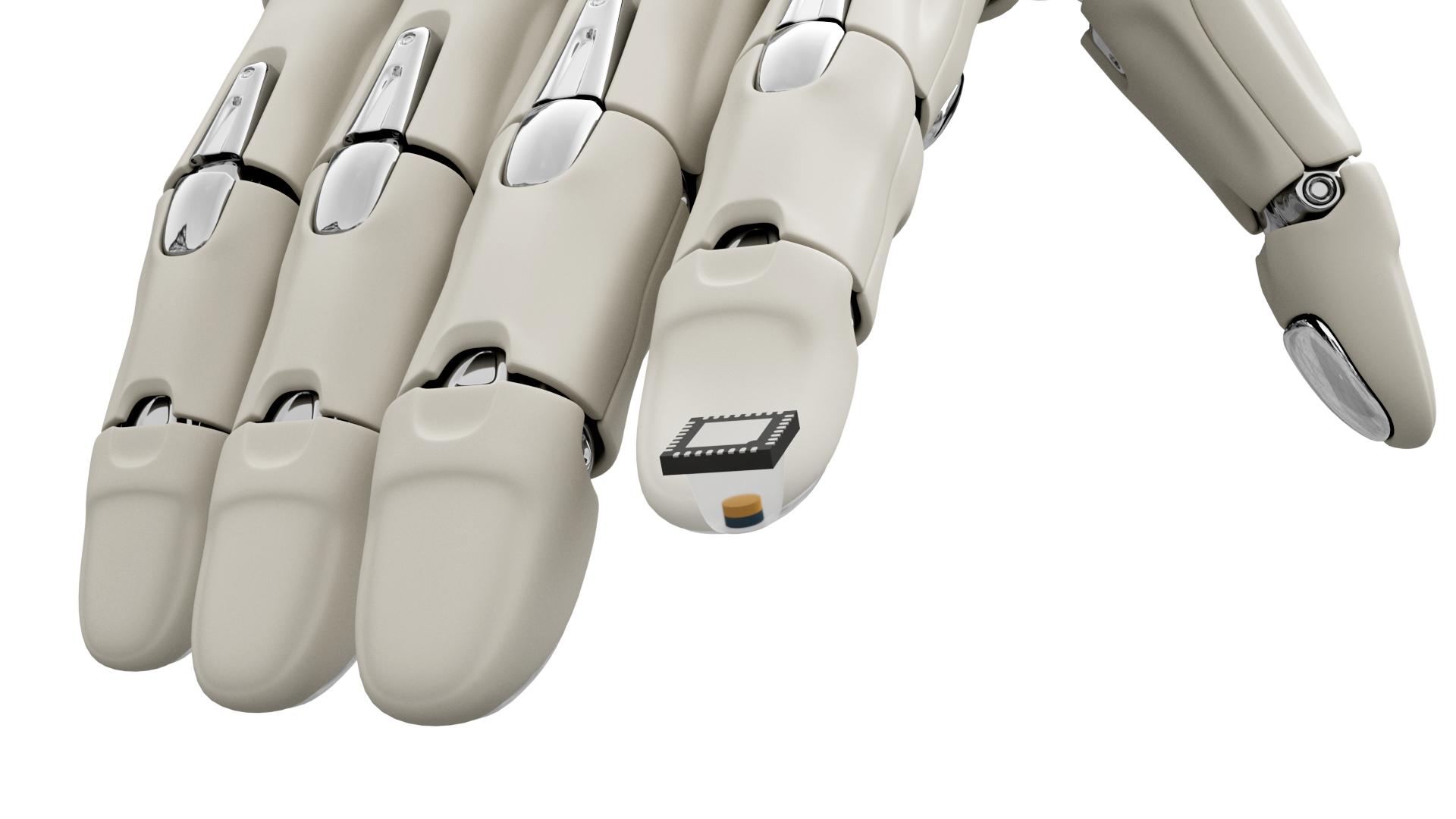
Humans take for granted the natural feedback that we receive when we pick up an object. It’s that sense of touch that allows us to grip and move objects with ease – a robot lacks this dexterity.
This is exactly the problem that Melexis’ engineers are trying to solve.
A new development by the company, named Tactaxis, is a compact and soft tactile sensor that can provide a 3D force vector on its surface. This integration helps improve robots' hands and grippers, enabling them to carry out delicate tasks such as fruit picking.
The technology has been successfully implemented in a working prototype. This prototype showcases several 3D magnetometer pixels, utilising Melexis' Triaxis technology. Along with the sensor, an elastomer material houses a magnet to create a soft contact surface that mimics human skin. This setup provides a high level of sensitivity, allowing for even slight amounts of force to elicit a response. Specifically, the prototype can distinguish changes in weight as small as 0.3 grams with a force resolution of 2.7 millinewtons.
The Tactaxis prototype is highly compact (with dimensions of just 5 x 5 x 5mm) and therefore suitable for tight spaces.
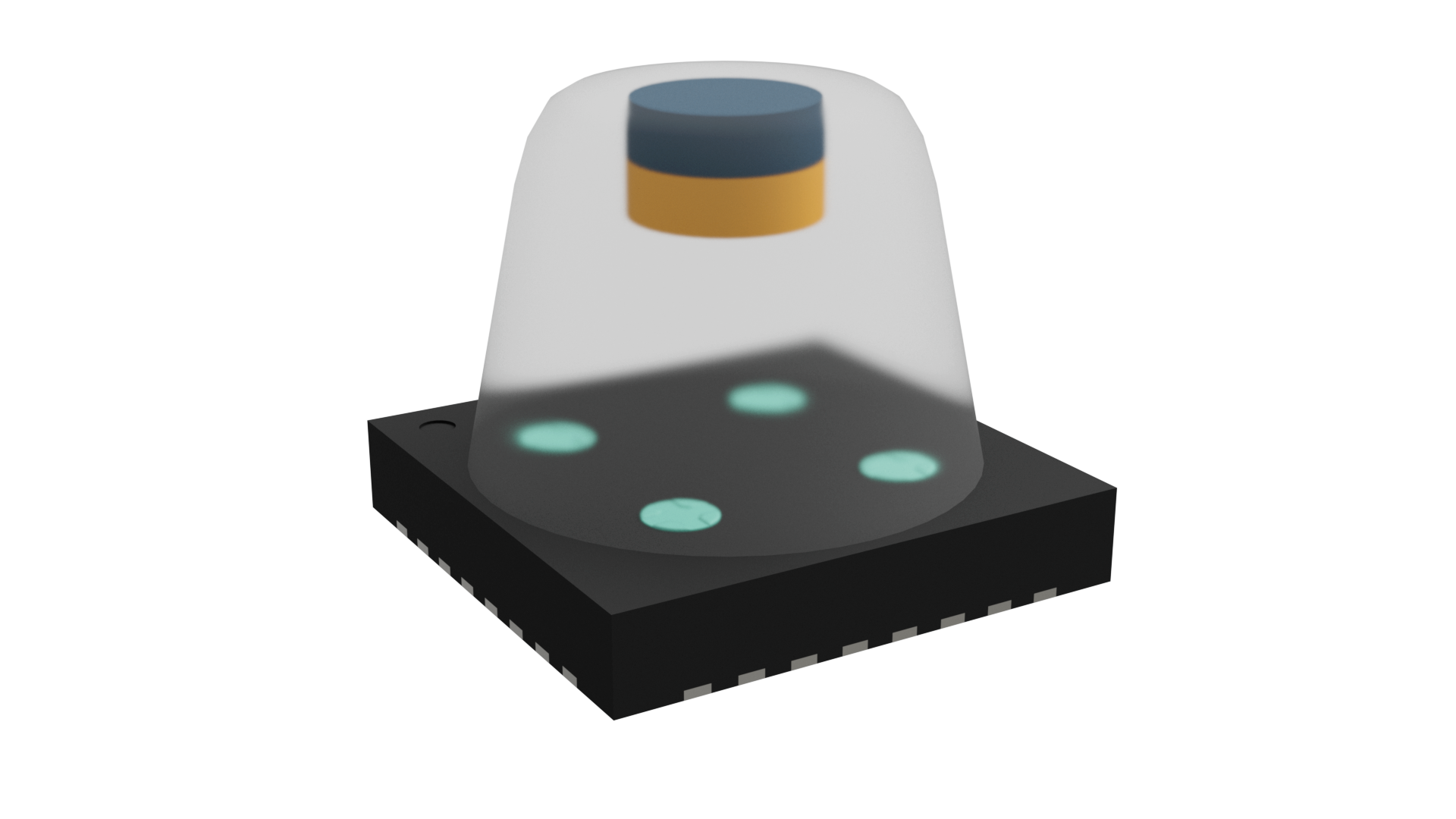
By using the gradiometric approach, the sensor becomes impervious to magnetic stray fields, thus avoiding any possible measurement inaccuracies. Moreover, it retains its durability even under extreme conditions such as temperature fluctuations. Unlike its optically-based tactile sensor counterparts, Tactaxis is fully integrated, enabling the production of large quantities of factory-calibrated sensors with significant cost and reliability advantages through semiconductor processing.
Théo Le Signor, Sensor Design Engineer, Melexis, foresees a big need for this tactile feedback in industries such as agriculture for picking soft fruits, in collaborative robots for safe interaction between man and machine, and in exoskeletons when you need to measure the forces that someone wants to apply to move forward.
Arcminaxis: Popularise precise motion for robots
There is currently a gap in the rotary sensors market. Triaxis is a magnetic sensor technology that everyone has seen and heard – there are currently one billion of these rotary sensors in the field. These are very robust, universal, and low cost with an accuracy of about 0.3 degrees.
“This is good,” notes Christian Schott, Process & Test Architect, Melexis. “But when we talk to our customers, they say ‘can you do something a bit better?’. That’s not so easy. There are some limits and we have already squeezed the maximum out of this.”
So, customers are using an alternative. It’s 16-bit, many magnetic poles, very complex and bulky with a much higher resolution – about 100x better. But this is an expensive alternative, and it needs to be very precisely mounted.
“What we need is really something in between,” said Schott.
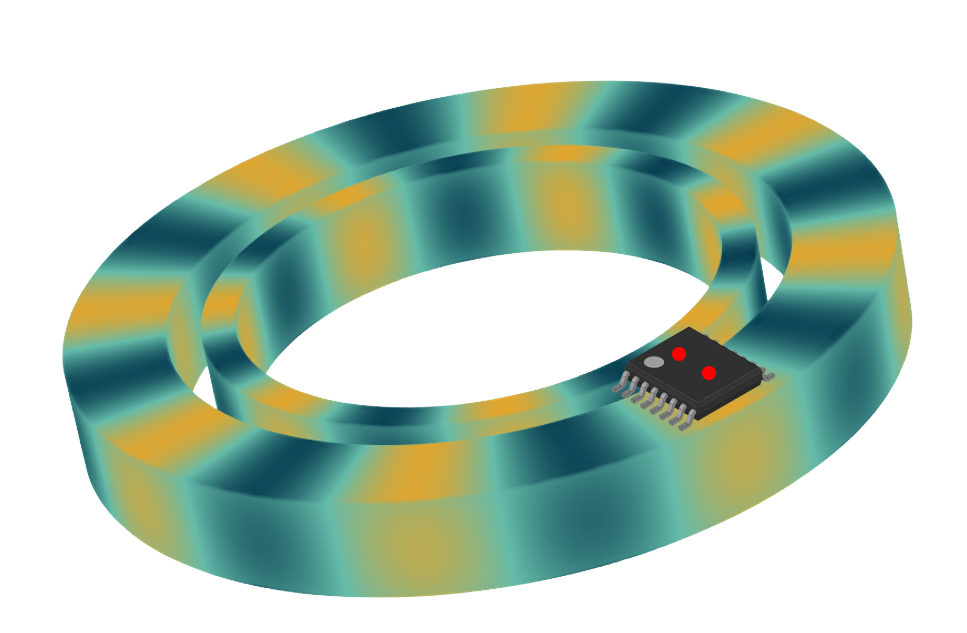
With that in mind, Melexis’ engineers took the Triaxis sensor and the multiple magnets from the bigger alternative to create Arcminaxis.
It’s a very robust solution which can be easily adapted and mounted on applications making it ideal for controlling the joints of industrial robots, cobots, and exoskeletons. The device offers a combination of on-chip calibration and high precision, making it a compact and scalable solution.
Using a magnet which has much bigger poles means a much stronger magnetic field which means it can have a larger area and larger assembly tolerances. And that is the advantage that customers are looking for because they cannot adjust to the few microns scale, a very accurate position sensor.
Overall, the solution utilises the Trixaxis sensing, a special magnet and then, linking them both is some protection of the intricate intellectual property on the magnet and the multi-axis sensing system.
Elaxis: compact and contactless integrated torque sensing
We need torque in many applications – for example, industrial robots, cobots, and e-bikes need to measure the torque applied on a shaft.
Direct torque measurement would be an asset because it’s much more precise and reactive.
This is why Melexis’ engineers have been working on Elaxis. This solution is compact, stray-field immune and ideal for stiff shafts. The use of bulky and expensive flux-gates will no longer be needed and, unlike other magneto-elasticity based systems, Elaxis is fully integrated and cost effective.
The device comprises two components – a magnetostrictive ring magnetised circumferentially and fixedly connected to a shaft that transmits the measured torque, and a sensor for magnetic field intensity such as Hall effect, mounted near the ring.
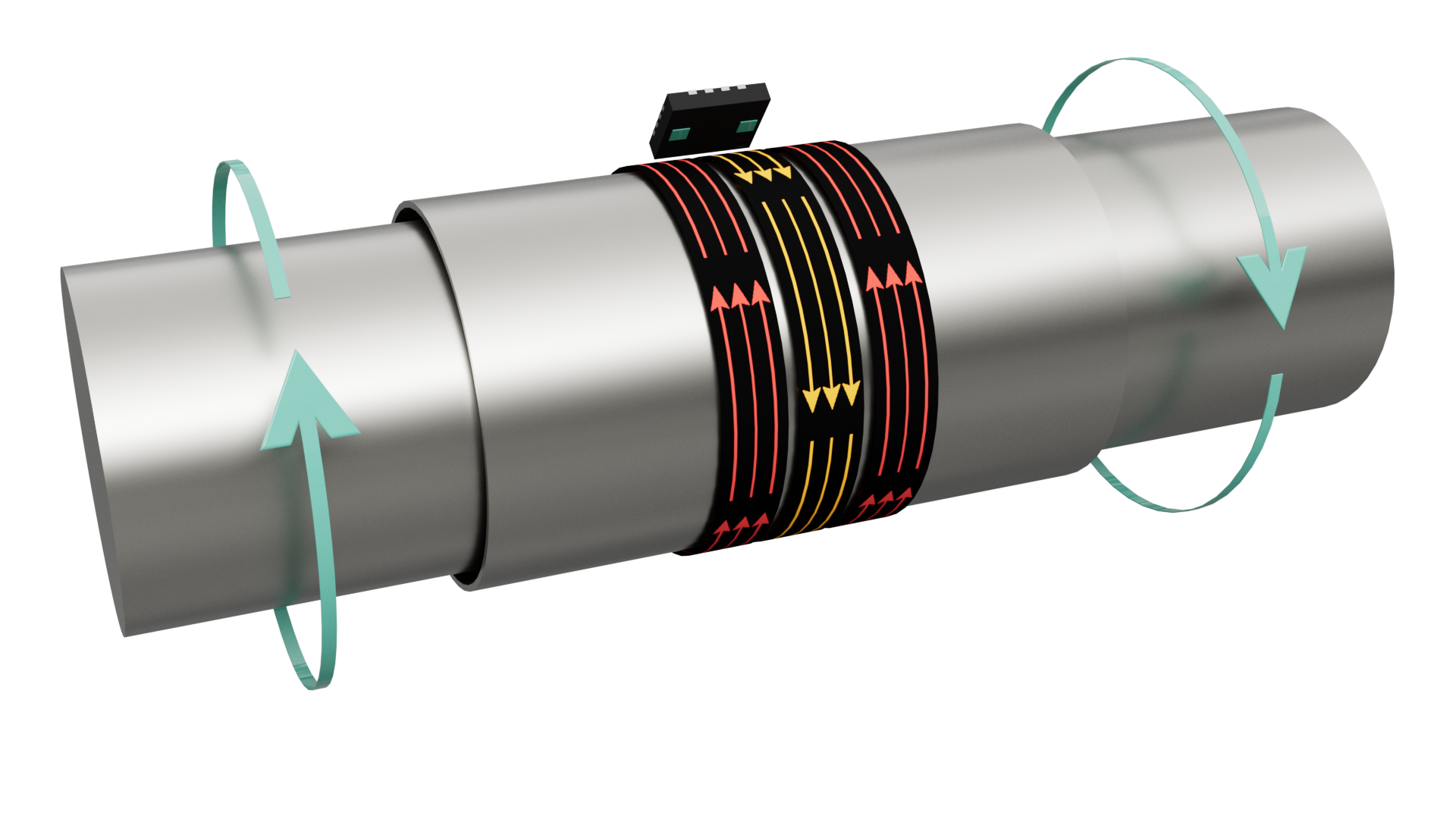
The transmission of torque in the ring leads to stresses that cause the anisotropy orientation to shift from circular to a more or less steep helical shape. As a result of the discontinuity in the axial component of magnetisation at the ends of the ring, a magnetic field is generated in the surrounding space.
According to a basic analysis, there is a predictable linear range in the correlation between field intensity and torque. Additionally, the polarity of the torque is dependent on its direction. Consequently, the electrical output from the field sensor will be a linear representation of the torque.
“What we target with this project is actually to have a complete integration of the system inside a single package,” said Bruno Brajon, Sensor Design Engineer, Melexis. “We are going to leverage, at the maximum, that whole technology to try to push it to the limit of what we can sense because we are targeting with very, very small fields.”
Biosensing: sense your health
Today, Melexis’ main contribution in digital health sensing consists of far infrared (FIR) technology for contactless temperature sensing.
The company’s activities in digital health include biomagnetic and biochemical sensing.
Biosensing enables the sensing of biomarkers in body fluids like sweat, tears, interstitial fluid a drop of blood and in exhaled air.
Melexis’ engineers are now working on BioFET sensors.
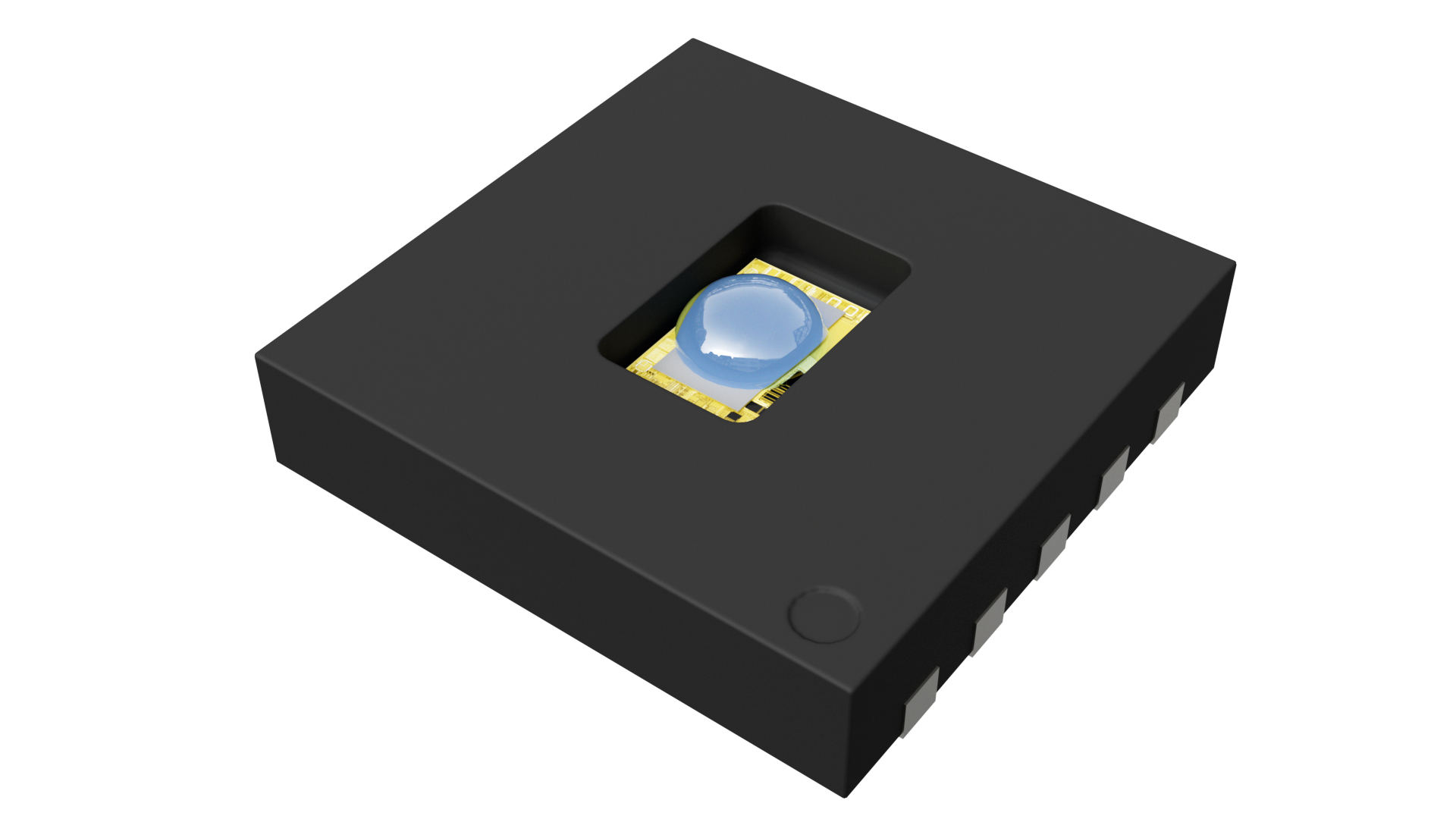
“Usually, when people [innovate with BioFET’s] they’re probably a biochemist with a physics background,” notes Axel Fanget, Sensor Design Engineer, Melexis. “So, what we do here is we want to offer a ready-to-use solution which integrates the FET and the underlying electronics.”
Quite often, people are using a huge, bulky instrument or a smaller one that is less accurate. Melexis engineers are working on a solution that can measure fast with “unseen performance” in terms of noise pollution of the concentration of biomarkers.
Normally, when people measure the biosensor they will measure the whole transcript curve on the transistor – which is long. If you have narrow transistors, you want to do several biomarker detections. So, you have a large RF, and it takes minutes to measure the biosensor. It’s also not accurate because you can go to high or very low voltages, so you have trips of the sensors.
“Here, [Melexis] has patented an electronic solution that will track the position of the transistor,” said Fanget. “[Our solution] will track the position without doing the full sweep of the transcript. It’s super-fast.”
The team is now progressing the project by moving from a bulky instrument to a compact PCB.
Typical applications could be in-vitro diagnostic devices at hospitals or even at homes as well as smart band aids.
These products still have a good few years of 'pre-development' and development before potentially being launched on the market.
The team at the Lab is 11 people strong and growing - and with that growth comes more innovation.


